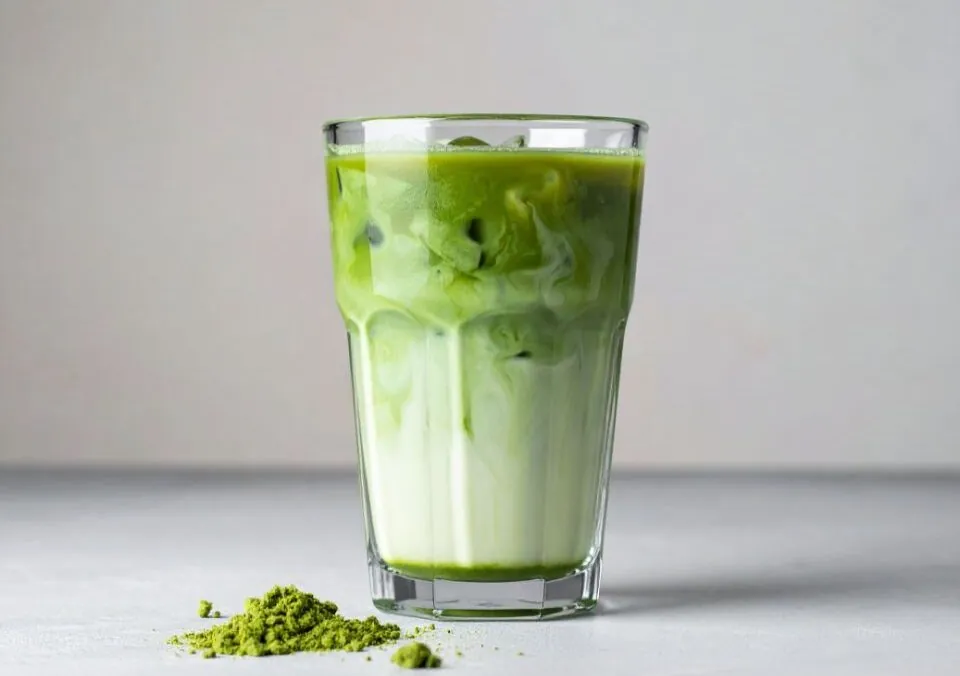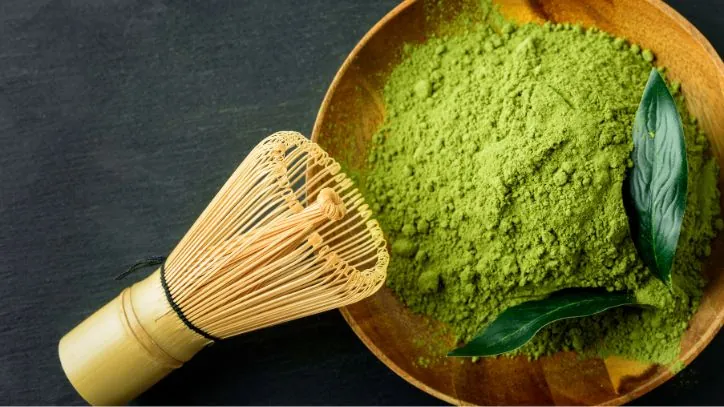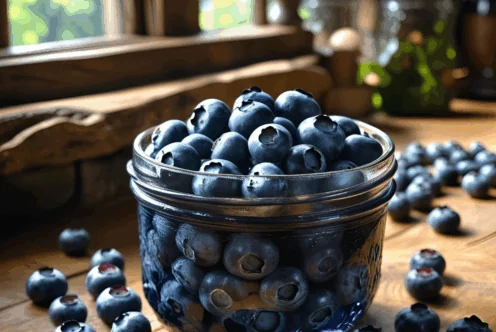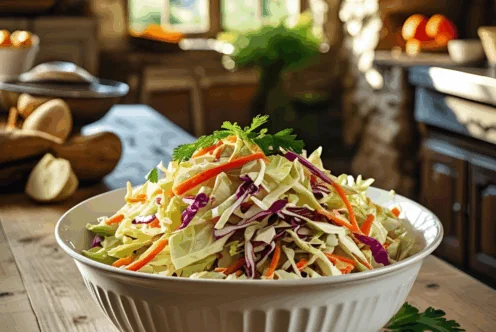Blog
The Scoop on Matcha!

If you frequent your local coffee shop, you’ve probably noticed the rising popularity of those creamy, light green drinks known as matcha. With its vibrant color and unique flavor, matcha isn’t just a trendy beverage; it’s a powerhouse of nutrition and flavor that is gaining traction around the world. While some may find the taste reminiscent of grass (my mom being one of them, but I wholeheartedly disagree), numerous studies and nutritionists highlight the health benefits that make matcha worth a try.
What is Matcha?
Matcha is a type of finely ground powder made from specially grown green tea leaves. The tea plants used to produce matcha are shaded from direct sunlight for several weeks before harvest, a process that enhances the chlorophyll content, giving matcha its vibrant green color. This cultivation process also boosts the production of amino acids, especially L-theanine, which contributes to matcha’s unique flavor profile and health benefits.
Unlike traditional tea, where leaves are steeped in water and then removed, matcha is consumed whole, allowing for a greater intake of nutrients. When you drink matcha, you are ingesting the entire leaf, making it far richer in nutrients than regular brewed green tea.
The Nutritional Profile of Matcha
Matcha is often praised for its impressive array of nutritional benefits. According to registered dietitian-nutritionist Mia Syn, matcha is bursting with powerful antioxidants. One of its key antioxidants is catechin epigallocatechin gallate (EGCG), which has been linked to numerous health benefits, including:
- Cell Protection: EGCG helps protect cells from damage caused by free radicals, potentially reducing the risk of diseases and aging.
- Anti-inflammatory Properties: The compounds in matcha can help reduce inflammation in the body, which is key for maintaining overall health.
- Cholesterol Regulation: Matcha has been associated with lowering bad cholesterol (LDL) while increasing good cholesterol (HDL).
- Improved Blood Sugar Levels: Regular consumption of matcha may improve insulin sensitivity and help regulate blood sugar levels.
- Detoxification: Matcha has detoxifying properties that help flush out toxins and heavy metals from the body.
For those looking to dive deeper into matcha’s nutritional benefits, you can read more on Healthline.
Caffeine Content and Energy Boost
One of the standout features of matcha is its caffeine content. A typical cup of matcha contains about 20-37 milligrams of caffeine, which is higher than regular green tea but lower than coffee. This moderate amount of caffeine provides a gentle energy boost without the jitteriness and subsequent crash that can occur with larger doses of caffeine found in coffee.
The caffeine in matcha is absorbed more slowly due to the presence of L-theanine, an amino acid that promotes a state of calm alertness. This means that you can enjoy sustained energy throughout the day without the sharp spikes and drops associated with beverages like coffee.
For more detailed information about caffeine in matcha compared to other beverages, check out The Nutrition Source.

How to Prepare Matcha at Home
Preparing matcha at home is not only simple but also allows you to customize your drink according to your preferences. Here’s a step-by-step guide on how to make your own matcha latte:
Ingredients
- Matcha Powder: 1.5-2.5 teaspoons (adjust based on your taste preference)
- Warm Water: 4 ounces
- Milk (optional): You can use dairy milk or plant-based alternatives such as almond, soy, or oat milk.
Instructions
- Measure the Matcha: Start by measuring out 1.5 to 2.5 teaspoons of matcha powder into a bowl or a matcha whisking bowl.
- Sift the Matcha (optional): To avoid clumps, you can sift the matcha powder through a fine mesh sieve into the bowl.
- Add Warm Water: Heat up about 4 ounces of water. The ideal temperature for whisking matcha is around 160-175°F (70-80°C). Avoid using boiling water, as it can destroy some of the delicate flavors and nutrients.
- Whisk Vigorously: Using a bamboo whisk called a chasen, whisk the matcha and water together vigorously in a zig-zag motion until it becomes frothy. If you don’t have a chasen, a standard frother or even a small whisk will work.
- Adjust and Add: Taste your matcha! If you prefer a milder taste, you can add more hot water or pour in some warm milk for a matcha latte. Sweeteners like honey or agave syrup can also be added according to your preference.
- Enjoy: Sip your homemade matcha latte and enjoy the unique, refreshing flavor while basking in its numerous health benefits!
Creative Ways to Use Matcha
Matcha isn’t limited to just beverages. Its unique flavor and vibrant color make it a versatile ingredient in various recipes. Here are some creative ways to incorporate matcha into your diet:
- Matcha Smoothies: Blend matcha powder into your favorite smoothie for an extra nutritional boost. Combine it with bananas, spinach, almond milk, and a scoop of protein powder for a powerful energy drink.
- Baking with Matcha: Add matcha powder to your baked goods like cookies, muffins, or pancakes for a unique flavor and color. Popular recipes include matcha brownies or matcha-infused cakes.
- Matcha Chia Pudding: Mix matcha powder with chia seeds and your choice of milk for a delicious and nutritious pudding that can be topped with fruits and nuts.
- Matcha Ice Cream: Blend matcha powder into homemade ice cream or yogurt for a refreshing dessert that combines sweetness with health benefits.
- Savory Dishes: Incorporate matcha into sauces or dressings for salads to elevate the nutritional content and add a subtle flavor.
Potential Side Effects and Considerations
While matcha offers numerous health benefits, it’s essential to consider any potential side effects. Drinking matcha in moderation is generally safe for most people, but excessive consumption could lead to:
- Caffeine Sensitivity: Those sensitive to caffeine may experience symptoms such as anxiety, insomnia, or a racing heart. It’s best to monitor your intake if you are prone to caffeine sensitivity.
- Heavy Metals: Since matcha is made from ground tea leaves, the quality of the matcha is crucial. Some lower-quality matcha can contain higher levels of heavy metals and contaminants. Always choose high-quality organic matcha from reputable brands. For information about testing matcha quality, consult resources like Consumer Labs.
How to Choose Quality Matcha
When choosing matcha, the quality can significantly affect both the flavor and the health benefits. Here are some tips for selecting the best matcha:
- Color: High-quality matcha should have a vibrant, bright green color due to its rich chlorophyll content. Dull or yellowish matcha may indicate lower quality or age.
- Texture: Quality matcha has a fine, silky texture. When you run it through your fingers, you should not feel any graininess.
- Taste: Premium matcha should have a sweet, smooth flavor with a hint of umami. If it’s overly bitter, it might not be the best quality.
- Source: Look for matcha sourced from Japan, particularly from regions known for high-quality tea production, such as Uji, Nishio, and Shizuoka.
- Organic Certification: Choosing organic matcha ensures that the tea is grown without synthetic pesticides or herbicides.
Conclusion
Matcha is more than just a trendy beverage; it’s a nutrient-rich drink that can easily be integrated into your daily routine. With a myriad of health benefits, a moderate caffeine boost, and the versatility to be used in various recipes, it’s worth giving matcha a try if you haven’t already. Whether you prefer it in a latte, smoothie, or baked good, the possibilities are endless.
As the matcha craze continues to grow, so does our understanding of its health benefits. So, why not shake up your usual coffee and tea routine and embrace the delightful world of matcha? For more insightful articles about coffee, tea, and healthy living, consider exploring the Fill Your Plate blog.
Now, grab some matcha and enjoy the delicious journey of flavors, health, and creativity it brings to your life!
By Heide Kennedy, Arizona Farm Bureau Communications Intern


















